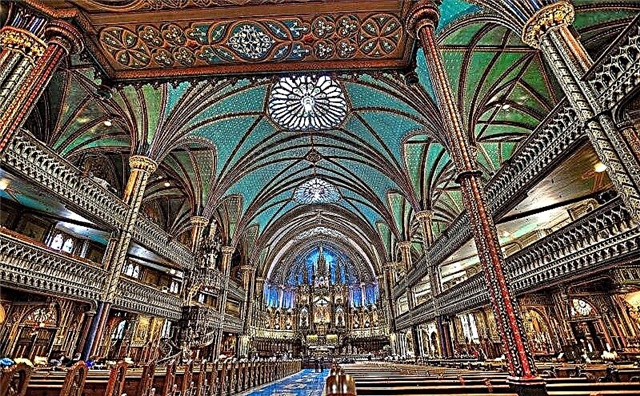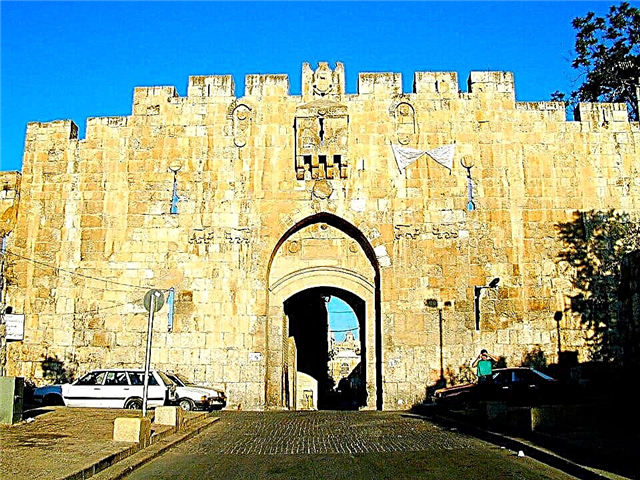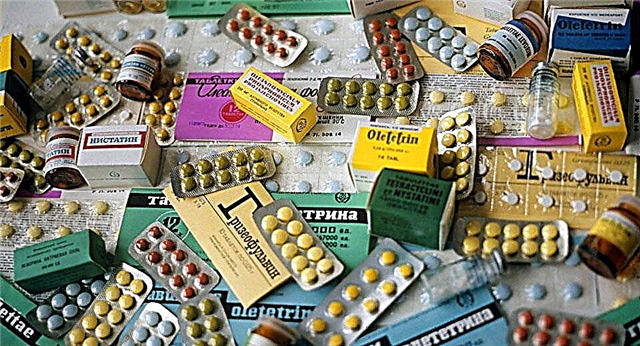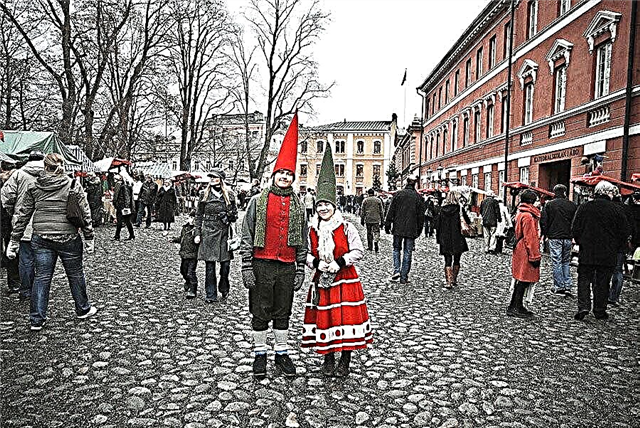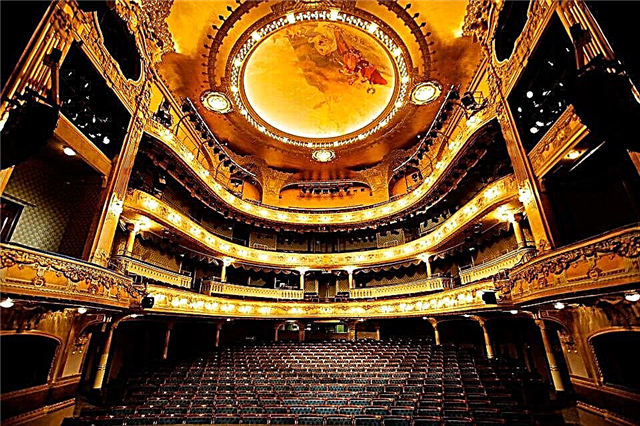Trafalgar Square in England is another iconic place in London, its "heart", as the residents of the city call it, or London's "Red Square", as the Russians say. No less famous than Big Ben or Buckingham Palace, this geographical and tourist center of the capital has witnessed many events.
History
The site of the future Trafalgar Square (as the square became known after 1830) was first noted by Edward I back in the 13th century. Most of it was occupied by stables that served the royal palace. Separately, in honor of his deceased wife, Edward erected a worship cross (Charing pillar), which in 1647 was demolished by decree of parliament. It becomes significant again after the restoration of royal power. In 1657, a statue of Charles I was erected on the site of the demolished pillar, and the death penalty and public punishment took place nearby.
Cardinal changes took place already at the beginning of the 19th century, when the premises of the stables were demolished, and the vacant lot that had arisen in the center of the city had to be given a neat appearance by opening it up for public festivities. John Nash, the court architect of George IV, was supposed to embody this idea. After the death of the king, Nash was removed from the arrangement of the square, so the work on his project was completed by Charles Barry. Initially, they decided to name the square in honor of the former king-sailor - Wilhelm Square. It was later renamed Trafalgar, cementing the British triumph.
What can you see
The central figure of the architectural ensemble of the sight is Nelson's Column. At its foot begins a rectangular area, bordered on four sides by pedestals, each of which is crowned with a sculpture of a famous person.

In front of the Nelson Monument, there are two fountains - western and eastern. Named after Lord Jellicoe and Beatty, two World War I admirals, they are designed to separate space to keep people from gathering. The fountains were installed immediately after the completion of the construction of the square, however, they took on a modern look after the reconstruction of the 1930s. Now they are decorated with bronze sculptures of dolphins, mermaids and newts.
Trafalgar Square is surrounded by no less interesting sights. From the north, it is bounded by the National Gallery. To see more than 2 thousand works of famous masters Michelangelo, Titian, Raphael, Rembrandt and others, about 6 million visitors come here annually. Next to the National is another gallery - Portrait, its collection is more modest, but also arouses interest. The latest modernization has combined them with the square itself, making the pedestrian street dividing the objects. Now a wide staircase leads from the square to the buildings.
To the north-east of the square is the Church of St. Martin in the Fields, which is attended by the royal family. On the east side is a South African house with animal bas-reliefs on its façade. It houses the South African Embassy. To see another embassy, you need to go to the western end of the square, where the Canadian House stands. The southern border is guarded by a monument to Charles I, installed behind the column, on an island between the lanes of the road.
Nelson's Column

The central figure of the Trafalgar architectural ensemble is the column of Nelson, the victorious admiral of the famous battle. The height of the monument is about 52 m, if we count the height of the column itself - 46 m and the statue - 5.5 m. Its construction cost about $ 6 million.
The column, carved out of gray granite, is made in the Corinthian style: the top is decorated with bronze ornaments, the base is rectangular with bronze bas-reliefs, which depict important milestones in the biography of the admiral. The western façade depicts the Battle of St. Vincent, after which Nelson was granted nobility, the Order of the Bath, and the rank of Rear Admiral. The northern bas-relief tells the story of the victory at Aboukir, won thanks to the successful maneuver of Nelson.
The eastern façade tells the story of the Battle of Copenhagen, which was not lost only because of the famous commander's bluff. Nelson's injury in the Battle of Trafalgar is depicted in the southern relief. An interesting fact is that the bronze for decorating the monument was obtained by melting captured cannons.
Built in 3 years from 1840 to 1843. column - creating a whole group of masters. The author of the monument itself - W. Railton, sculpture - E. Bailey, bas-reliefs - M. Watson, W. Wooddington, D. Ternaus and D. Carew. In 1867, at the base of the monument, 4 granite sculptures of lions by E. Landseer, whose height is 6 m, appeared.
Monument to Charles I

The London monument to Charles I is the center of the capital, its 0 kilometer, from which the distance to any point in the city is measured. This first equestrian monument in Great Britain was created in 1633 by the order of Lord Treasurer R. Weston by the sculptor Y. Le Suer. The English Revolution began and Cromwell ordered the confiscation and destruction of the statue. The bronze sculpture was saved by the coppersmith D. Rivette, who, instead of melting it down, hid it.
History took a sharp turn, and the Restoration brought the monarchs back to the throne. It was then that the statue reappeared and was installed in the place where the Charing pillar had once been, and then the regicides were executed. And now anyone can admire the infamous king riding a horse in light armor. In his left hand he has the reins, in his right - the symbol of royal power. The monument is similar to the ceremonial equestrian statues of monarchs, the main difference is the style of the image of the hero himself, the ordinariness of his attire. Every year on January 30 - the day of the execution of the monarch - Londoners and guests of the city come to honor his memory.
Four pedestals and monuments
As conceived by Charles Barry, pedestals were placed at the four corners of the square, which were supposed to occupy the statues of worthy personalities. Three applicants were quickly identified.
The first pedestal was reserved for himself by George IV, having paid 9 thousand guineas for it. The king, during whose reign England acquired a naval advantage, seemed a worthy candidate. His equestrian statue by F. Chantry appeared on the northeastern pedestal in 1843. It was supposed to be placed here temporarily, because was created for the Marble Arch, but remained forever.
The southwestern pedestal in 1856 was occupied by a monument to General C. Napier, who was the commander-in-chief in the Indian campaign and conquered the province of Sid. Its almost 4-meter statue, designed by D. Adams, was created with money collected by subscription. Another general, who became famous in India and won the love of soldiers, occupies the western pedestal. The statue of General G. Havelock by W. Benes was installed in 1861.
In 1936 they wanted to replace the monuments of C. Napier and G. Havelock with the busts of Admirals Beatty and Jellicoe. The last place was found along the northern wall, later a bust of Admiral Cunningham was added to this row. The second attempt to remove the statue from the square was in 2003 - the mayor of London, under pressure from immigrants from India, proposed replacing the statue of G. Havelock with a more politically correct character. However, Londoners defended their hero.
Coca-Cola London Eye Ticket - £ 24.30
Tower of London and Royal Treasure Exhibition Ticket - £ 26.80
Tower Bridge ticket - £ 9.80
Westminster Abbey entrance ticket and audio guide - £ 20
Madame Tussauds ticket - £ 29
St Paul's Cathedral Fast Track Ticket - £ 16
Skyscraper "Shard" - entrance ticket and champagne - £ 24.95
Fourth pedestal
The fourth pedestal was intended for William IV, but there was no money to create the statue. For more than 150 years, the foundation waited for its owner, until, in 1994, Prue Leith, chair of the Royal Society of Arts, proposed using the empty pedestal to house contemporary sculptures and installations.
Five years later, the opening took place - on it appeared the work of Mark Wallinger "Ecce Homo" - a life-size statue of Christ.Then B. Woodrow and R. Whiteread exhibited here. After 4 years of calm, the foundation is occupied by the works of M. Quinn, T. Schütte, K. Fritz, D. Shrigley and others. What has not been seen on the fourth pedestal! And the model of the ship in a bottle, and the project of the hotel, and the skeleton of a horse, and the generally accepted gesture "everything is fine", i.e. 7-meter thumb-up hand that will stay here until March 2018.
The 2009 project “One and the Other” was interesting, which represented an hourly change of “living sculptures”. Within 100 days 2.4 thousand Britons replaced each other on a pedestal, where they served as a "statue".
How much more does he have to see? So in March, the current sculpture will be replaced by the winged god Lamasu, made of empty syrup cans by M. Rakovitz, which tells about the destruction in Iraq. The next in 2020 will be H. Phillipson's non-standard composition "The End".
Central Park Hotel
London
Located less than 100 meters from Hyde Park

Hotel Edward Paddington
London
Minutes from Paddington Station and Hyde Park

DoubleTree by Hilton London - Docklands Riverside
London
Located on the embankment of the Thames

Park Plaza County Hall London
London
Just minutes from the banks of the Thames and the London Eye

Blue rooster

The most controversial of the contemporary works exhibited on the 4th pedestal is the "Blue Rooster" statue by Katharina Fritz. The nearly 5-meter high fiberglass sculpture defied the surrounding grandeur and conservatism primarily with color. The bright blue bird looked surreal against the background of stone and bronze statues and sculptures.
When asked by journalists about the reason for choosing this particular image, Katarina replied that she was trying to create something at the same time serious and funny, so that everyone could see themselves in it. At the same time, Fritz's Rooster became a symbol of renewal and dynamism, just like London itself. But there were those who saw it as the national emblem of France. If not for the mayor's defense, the sculpture that Londoners liked might not have appeared on the square.
Pigeons
Another attraction of the square is the unusually large number of pigeons living here. Their number reached 35 thousand. Citizens and tourists came to feed them with pleasure, so sellers began to offer special food.
In 2000, the city authorities begin to fight birds. First, the food stalls are demolished, and in 2007, an official ban on feeding birds in Trafalgar Square is issued. The offender is liable to a fine of £ 50. What is the fault of the birds? It turned out that about 150 thous.
Now, to feed the pigeons, you need to move south of Nelson's Column, where Londoners claim there are places outside of the square.
Where is it located and how to get there
Trafalgar Square is located at the intersection of the three main streets of the British capital: Pall Mall, Strand and Whitehall. Considering that this is the center of the most popular area - Westminster, it is easy to get here by different transport:
- By bus 3, 6, 9, 12, 23, 24, 29, 88, 139, 159, 176, 453, N3, N5, N9, N18, N20, N29, N41, N97, N109, N113, N136, N279, N550 , N551;
- Metro: Charing Cross stations (Bakerloo and North lines) Embankment (District, Koltsevaya and North lines) and Lexter Square (North and Piccadili lines).
For those planning to explore other London attractions using public transport, an online travel planner for the capital will come in handy.
Trafalgar Square on the map

